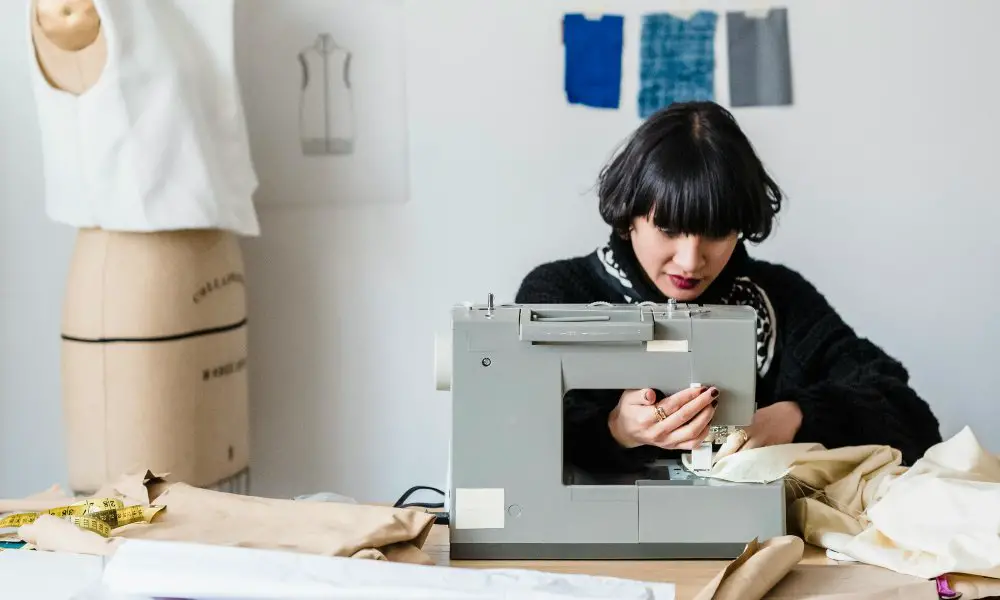Have you ever marveled at the impeccable fit of haute couture garments? The secret lies in sculpting fabric with darts – intricate folds that shape the cloth to the body’s contours. Mastering the technique of sewing darts is a rite of passage for any sartorial savant.
Understanding Darts
The Art of Sculpting Fabric
Defining Darts
A dart is a folded, stitched tuck in a garment that releases excess fabric, creating shape and form-fitting curves. These origami-like folds are ubiquitous in fashioning structured bodices, sculpted sleeves, and flattering skirt silhouettes. From the bust dart that shapes the bust to the waist dart that cinches the waistline and the shoulder dart that refines the shoulder’s slope, darts are the unsung heroes of couture sewing.
Types of Darts
While darts predominantly manifest as inward-facing folds, their versatility extends to outward-facing variants that introduce gentle flares. Classic darts include the bust, waist, and shoulder dart, but the family extends to the elbow, leg, french dart, and more. Darts can be single-pointed or double-pointed, vertical or horizontal, curved or straight, each serving a unique purpose in garment sewing.
Preparing for Dart Sewing
Gathering the Essentials
Supplies Needed
Assemble your dart-sewing arsenal: scissors, chalk or fabric markers, pins, an iron, and a sewing machine primed with coordinating thread. Ensure your fabric is preshrunk and pressed for precise stitching. Gather any sewing patterns, pattern pieces, or tracing wheels you’ll need to transfer markings.
Marking the Dart
Accurately Transferring Dart Lines
With utmost precision, transfer the dart’s seamline markings from your sewing pattern to the wrong side of the fabric using tailors’ chalk or washable fabric markers. Double-check the dart’s length, width, positioning, and shape to avoid misaligned darts.
Executing the Dart
The Meticulous Process
Step 1: Stitching the Dart
Prepare the fabric, combine the wrong sides, and align the marked dart lines. Sew the dart from the wide end toward the point, pivoting at the apex with your needle down. Backstitch at both ends for reinforcement, maintaining a consistent stitch length and unwavering stitching line.
Step 2: Perfecting the Point
Tie off the thread tail and trim the dart’s excess fabric, leaving a ¼ inch seam allowance. Precisely clip into the point, carefully avoiding the stitching line to allow the fabric to mold seamlessly.
Step 3: Securing the Dart
Press the dart flat, folding the seam allowance under. Secure the folded edge with a line of stitching or hand-basting for a temporary tack.
Finesse Touches for a Flawless Finish

Pressing the Dart
The key to a crisp, tailored dart lies in meticulous pressing. Using a tailor’s ham or pressing cushion, firmly press the dart from its point outward, coaxing the fabric into submission.
Concealing the Underside
For a flawless finish, conceal the dart’s underside stitching with a neat catch-stitch or bind the raw edges with bias or stay tape.
Conquering Curved Darts
Mastering the Arc
Curved Darts Demystified
While straight darts follow a linear path, curved darts elegantly navigate bodily arcs, sculpting fabric around the bust’s swell or accentuating the hip’s flare. This technique demands finesse and an artist’s eye.
Techniques for Curved Precision
To tame the curve, sew in increments, pivoting the fabric while maintaining an unwavering stitch length. Clip into the seam allowance’s convex edge for tighter curves, enabling the fabric to mold seamlessly.
Troubleshooting Common Dart Dilemmas
Puckered Darts
If your darts exhibit unsightly puckers, the culprit likely lies in uneven stitching tension or misaligned fabric grainlines. Adjust your sewing machine’s tension and realign the fabric’s weave before trying again.
Distorted Dart Shapes
Distorted darts can stem from inaccurate pattern markings or fabric stretching during stitching. Meticulously transfer markings, avoid tugging the fabric, and consider using stabilizers for lightweight textiles.
FAQs
How do I mark darts on fabric without a pattern?
Use a tracing wheel or chalk to directly transfer the dart shape from the pattern piece onto the fabric. Alternatively, measure and mark the dart lines using tailors’ chalk or a fabric pen.
Can I sew darts on knits or stretchy fabrics?
While darts work best on woven fabrics, you can sew them on stable knits using a zig-zag stitch or stretching the fabric slightly as you sew. Avoid darts on super stretchy knits.
How do I fix a puckered dart?
Try re-pressing the dart over a tailor’s ham, re-stitching with even tension, or concealing the ruffle with a top-stitch or decorative element. As a last resort, carefully pick out the stitches and resew.
Do I need to clip curved darts?
Clipping the seam allowance on the inner curve allows the fabric to mold smoothly around tight curves while sewing, so it’s recommended for curved darts.
Have you encountered any other dart sewing challenges that require a deft hand? Please share your experiences, and let’s elevate the art of couture sewing together.
***
Main image: pexels




